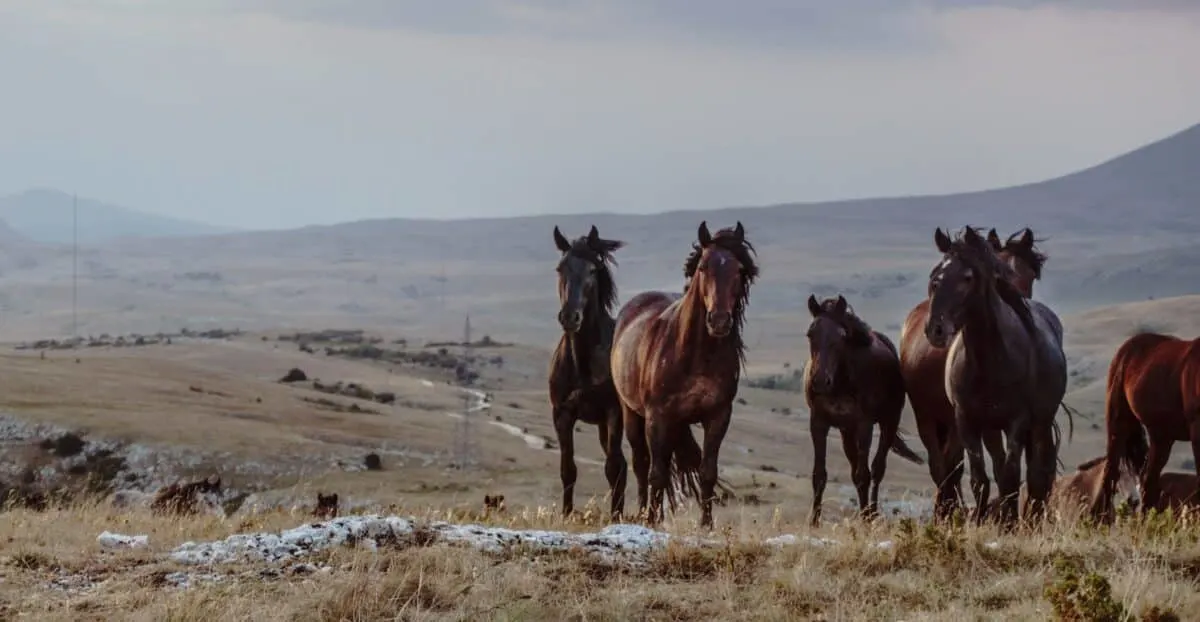On a slender crescent of land adrift in the vast Atlantic Ocean, just off the coast of Nova Scotia, hundreds of horses roam free. These majestic creatures gallop across rolling dunes, while their chestnut coats vividly contrast the white sands and deep blue waters. However, beneath this idyllic picture lies a story of controversy, biodiversity under siege, and a battle against romanticized myths. Welcome to Sable Island, where the future of its feral horse population hangs in the balance.
The Enigma of Sable Island
A Land of Treacherous Beauty: Sable Island, measuring a mere 12 square miles, has captured the Canadian heart for its rugged allure and perilous conditions. Over the centuries, it has been a graveyard for over 350 ships, thanks to squalls, shifting sandbars, thick fog, and unforgiving currents.
The Legend of the Feral Horses: Central to the island’s image are the feral horses. These creatures have been entwined in myths, with tales that they were shipwreck survivors. In reality, experts reveal a more mundane origin: they were left on the island in the 1700s by a Boston merchant, alongside cattle, pigs, and sheep. Against the odds, these horses outlasted their fellow passengers, surviving on the island’s grasses and freshwater ponds.
A Resilient Population
An Island Untouched by Time: Isolation has led these horses to diverge genetically from other communities. Their limited interaction with humans has made them a compelling subject for researchers who seek to understand their unique adaptation.
Saved from the Brink: In the 1950s, the Canadian government considered shipping the horses to coalmines or slaughter. However, an astutely executed public campaign, where children were promoted to write letters to the prime minister, became a turning point. The result? Full protection for the Sable Island horses, courtesy of an amendment to the Canada Shipping Act.
Population Swings: Recent events have raised questions about the future of the herd. Harsh winter conditions have taken a toll, causing nearly 150 horse deaths. Yet, the population, which stood at 250 horses in 1961, reached a record high of 591 last year.
The Battle for Biodiversity
Biodiversity at Stake: Biologists are growing increasingly alarmed. They argue that the horses are wreaking havoc on the island’s rare biodiversity.
Farm Animals Out of Place: These horses, experts claim, are essentially farm animals trying to survive in a highly degraded environment. They endure suffering, battling diseases, lack of shelter, and limited access to clean water and food. It’s a population of abandoned animals under extreme stress.
The Romantic Ideal
Swaying Public Opinion: The romanticized notion of the Sable Island horses, depicted prominently in literature, film, and television, has entrenched public support for preserving the status quo.
Biologists’ Hopeful Beginnings: When Parks Canada acquired the island, biologists anticipated that the park service’s mandate to control invasive species would finally lead to the horses’ removal.
Parks Canada’s Controversial Stance: However, it became evident that a different faction had the ear of Parks Canada. The organization now considers the horses a “naturalized” species, treated as wildlife just like any other. The argument is that they’ve thrived in the absence of human involvement, indicating adaptation to the environment. Ultimately, it’s a matter of values, not just science.
An Emotional Quandary: Ian Jones, a professor of biology, points out that he and his wife are avid horse lovers, owning a Shetland pony. He acknowledges the charisma of horses and their unique bond with humans. Still, he insists that leaving a mass of horses on a remote island is having a devastating impact.
Conclusion
The Sable Island horses’ story is not a simple one. Their origin might lack the grandeur of shipwreck survival, but it’s a testament to their resilience. Despite their hardiness, biologists are sounding the alarm about their impact on the island’s fragile ecosystem. The romantic image of these horses has stirred public opinion, making it difficult to reconsider their presence.
As Sable Island stands at a crossroads, the battle to protect its unique biodiversity while respecting the heritage of these feral horses rages on. Will science and conservation ultimately triumph over sentiment, or will the horses continue to roam freely in this remote paradise, for better or for worse? The future of Sable Island’s wild horses and its biodiversity hangs in the balance.
Up next:
Are There Still Wild Horses in America?
Wild Horse Rescued from Peculiar Position
African Elephant vs. Wild Horse
Join our Forum for free today!

- The Kleptomaniac Cat That Rules Houston - July 20, 2024
- Elephant Makes a Lifelong Friend at Sanctuary in Tennessee - July 14, 2024
- Evidence For World’s Oldest Fossilized Forest Discovered in New York - July 11, 2024

